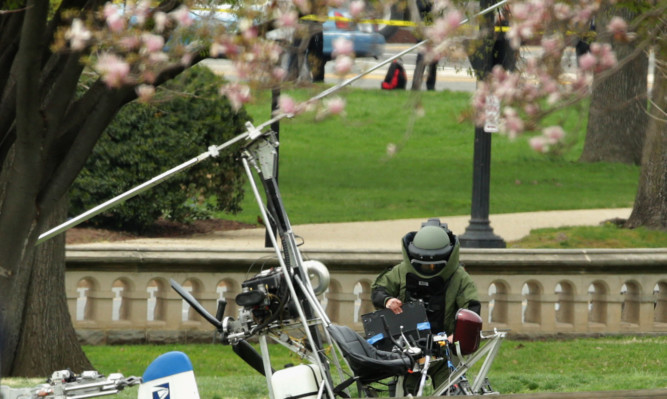
US Congress members are demanding an explanation from security chiefs on how they determined that a small gyrocopter piloted by a Florida postman did not pose a threat to the nation’s capital when it flew through restricted airspace.
“Multiple weapons” were aimed at the gyrocopter, but officials decided not to bring it down in part for fear of harming tourists and others on the National Mall, politicians said.
The incident exposed a gap in efforts to ensure the security of the White House, the Capitol and other critical buildings in Washington DC.
“It all ended safe. There was no loss of life. It’s their judgment call to make,” said Utah Republican Jason Chaffetz, chairman of the House of Representatives Oversight Committee.
The panel plans to hold a hearing on April 29 with representatives of six agencies charged with protecting Washington and its airspace: the Secret Service; US Capitol Police; Congress’ Sergeant at Arms; the Federal Aviation Administration; North American Aerospace Defence Command (NORAD); and the US Park Police.
Three of the agencies – the FAA, Norad and the Park Police – did not attend a closed-door briefing with panel members, angering Congress members.
“They’ve got a lot of explaining to do” about why they did not attend the briefing, Mr Chaffetz said.
Pilot Doug Hughes, 61, was “lucky to be alive” and “should have been blown out of the air”, Mr Chaffetz told reporters after the briefing.
Hughes’ stunt was aimed at drawing attention to campaign finance reform. He was charged with two federal crimes – violating restricted airspace and operating an unregistered aircraft – that carry penalties of up to four years in prison and fines. He will next appear in court on May 8.
Mr Chaffetz said security agencies tracked Hughes as he approached the Capitol after taking off from Gettysburg, Pennsylvania. A combination of “lack of communication and some human error” by Capitol police and other officials allowed Hughes to steer his tiny aircraft across 30 miles of restricted airspace to within a few hundred feet of the Capitol building before landing on the West Lawn, Mr Chaffetz said.
Mr Chaffetz said he was deeply concerned at what he described as a near-miss in “a no-fail mission” for security agencies.
Elijah Cummings, the committee’s top Democrat, called the incident a “wake-up call” to all law enforcement agencies involved. Capitol police, the Secret Service and other agencies needed “to look very carefully at what happened here, dissect it, figure it out and use this to make things better”, he said.
Mr Cummings and Mr Chaffetz said they were outraged that members of Congress were not alerted to the potential security threat even as parts of the Capitol complex were placed under lockdown.
Politicians were told during the briefing that “incursions” into the restricted airspace around Washington occurred nearly every day and were usually “dealt with in a smooth and professional manner”, Mr Chaffetz said, in stark contrast to the gyrocopter incident.

Enjoy the convenience of having The Sunday Post delivered as a digital ePaper straight to your smartphone, tablet or computer.
Subscribe for only £5.49 a month and enjoy all the benefits of the printed paper as a digital replica.
Subscribe